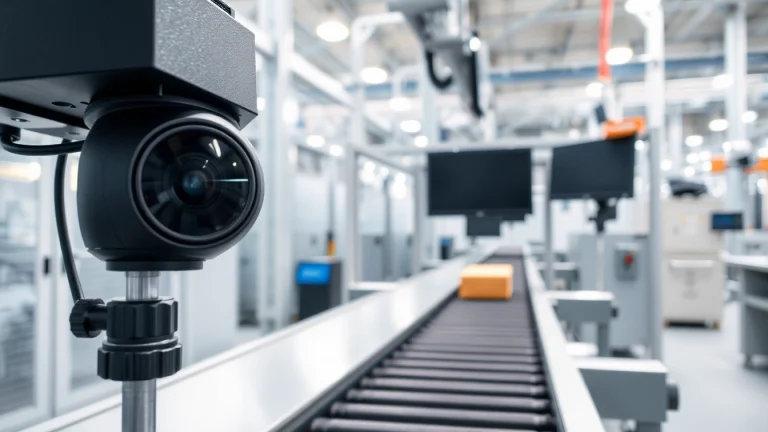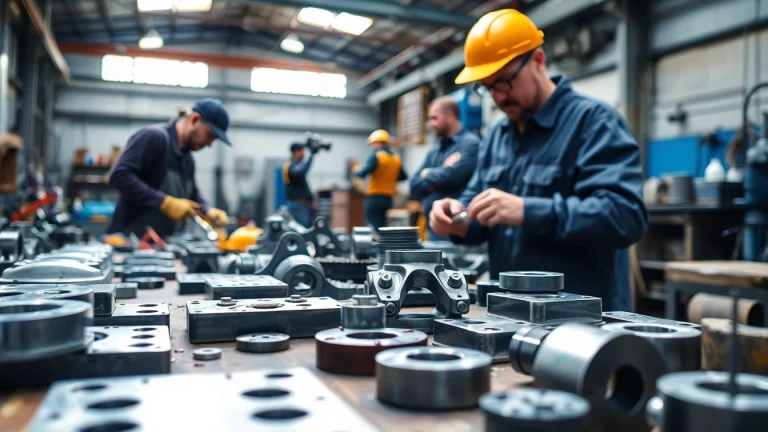
Understanding Machine Vision: Technologies, Applications, and Benefits
What is Machine Vision?
Machine vision is the technology that enables machines to interpret visual information from their environment. It employs a combination of cameras, sensors, and computer algorithms to automate inspection and analysis tasks that were once reliant on human eyes. As industries increasingly adopt machine vision solutions, the ability to perform real-time analysis and decision-making processes has become paramount for efficiency and quality assurance across various sectors.
Definition and Core Functions of Machine Vision
Defined broadly, machine vision comprises several methodologies and technologies that allow machines to capture and process visual data. Core functions typically include:
- Image Acquisition: Capturing visual data using cameras or sensors.
- Image Processing: Using software to analyze and extract meaningful information from images.
- Decision Making: Determining actions based on processed data, such as defect detection or quality inspection.
- Output: Providing results in a usable format, be it alerts, logs, or direct control signals to machinery.
How Machine Vision Works: Components and Technologies
Machine vision systems consist of several key components:
- Cameras: These are used to capture images. They can be standard cameras or specialized ones like line scan or 3D cameras.
- Lighting: Proper illumination is crucial for high-quality image capture. Various lighting methods (e.g., backlighting, diffuse lighting) are applied based on the material and surface characteristics of the inspected objects.
- Processing Software: After images are captured, software algorithms, including image filtering, pattern recognition, and feature extraction, analyze the data.
- Interface: The findings are then integrated with other systems, feeding data to other manufacturing processes, databases, or control systems.
Applications of Machine Vision in Various Industries
Machine vision finds applications across a multitude of industries, enhancing production capabilities and fostering innovation:
- Manufacturing: Used for quality control, assembly verification, and defect identification. For example, machine vision systems can inspect electronic components to ensure soldering quality.
- Pharmaceuticals: Ensures accurate labeling and packaging, verifying that every product meets strict health guidelines.
- Automotive: Employed for part inspection and assembly verification to maintain high standards of safety and quality.
- Aerospace: Helps in inspecting aircraft components for defects, contributing significantly to safety measures.
Key Benefits of Implementing Machine Vision
Improved Quality Control and Accuracy
Machine vision systems significantly enhance quality control processes by providing consistent and accurate inspections. These systems drastically reduce the chances of human error, ensuring that every product meets predefined specifications. Statistical process control and real-time monitoring can detect defects long before they impact production volumes.
Cost-Effectiveness and Efficiency Gains
By automating inspection tasks traditionally carried out by humans, companies can save costs related to labor and rework. The enhanced efficiency also translates to reduced cycle times, faster throughput, and optimized labor allocation, allowing human workers to focus on higher-value tasks.
Enhancing Productivity Through Automation
Implementing machine vision systems leads to higher productivity as these technologies can operate continuously without fatigue or variation in performance. Automated processes enable manufacturers to ramp up production while maintaining consistent quality, ultimately driving higher outputs.
Types of Machine Vision Systems
1D, 2D, and 3D Machine Vision Technologies
Machine vision systems are classified based on their dimensional capabilities:
- 1D Systems: Focused primarily on linear measurements, these systems are utilized for barcode scanning and part counting.
- 2D Systems: These systems analyze flat images and are widely employed for inspection tasks like surface defect detection.
- 3D Systems: Utilizing advanced imaging techniques, 3D systems can assess complex geometries and surface profiles, essential for industries requiring high precision.
Choosing the Right System for Your Needs
Selecting a machine vision system depends on various factors such as the specific application, required precision, and working environment. Businesses should conduct thorough assessments to match the technology with an intended purpose, ensuring that choices align with operational goals and output requirements.
Comparative Analysis: Machine Vision vs Computer Vision
While often used interchangeably, machine vision and computer vision serve distinct purposes:
- Machine Vision: Primarily focused on industrial automation, it is designed for structured tasks like inspection and measurement using predefined algorithms.
- Computer Vision: More broad-reaching, including applications such as image recognition and interpretation, leveraging artificial intelligence and machine learning.
Challenges in Machine Vision Implementation
Common Technical Difficulties and Solutions
Implementing machine vision can present challenges, such as:
- Lighting Issues: Poor or inconsistent lighting can lead to inadequate image quality. Employing controlled lighting setups often mitigates these problems.
- Calibration and Alignment: Ensuring cameras and sensors are correctly aligned can be pivotal. Regular calibration checks should be part of maintenance routines.
Integration with Existing Systems
Integrating machine vision technologies into established processes can be complex. Businesses should plan their implementation carefully, considering compatibility with existing machinery and data systems. Employing standardized communication protocols can simplify integration.
Training and Skill Development for Users
Adopting machine vision technology necessitates training for staff. Organizations should invest in developing technical skills to allow personnel to operate and maintain these systems effectively. Offering workshops and leveraging vendor support can promote competency in managing machine vision systems.
Future Trends in Machine Vision Technology
The Impact of AI and Machine Learning
The integration of artificial intelligence (AI) and machine learning is set to revolutionize the effectiveness of machine vision systems. Improved object recognition technologies will allow systems to adapt and learn from deviations in visual data, leading to better decision-making processes. Applications could expand to predictive maintenance and advanced analytics.
Emerging Applications and Innovations
As technology advances, new applications for machine vision continue to emerge. Expect to see innovations like enhanced biometric screenings in security environments, more seamless integration within the Internet of Things (IoT), and applications in automated driving systems, further pushing the boundaries of this essential technology.
Market Predictions and Industry Shifts
Market analysts predict consistent growth in the machine vision sector, driven by the increasing demand for automation and the rise of Industry 4.0. Industries are expected to invest heavily in technology that enhances productivity, improves accuracy, and contributes to overall operational efficiency.


